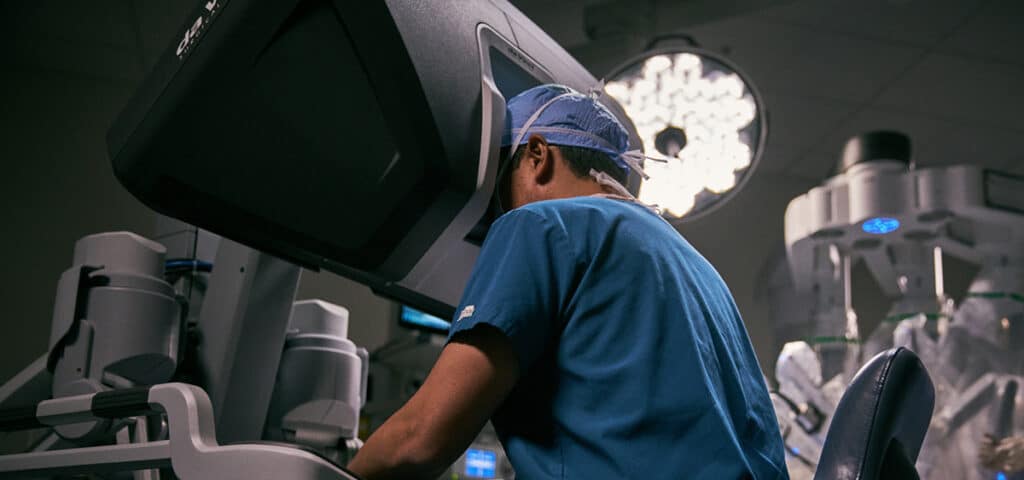

Transversus Abdominis Release (TAR):
A Revolutionary Surgical Technique For Complex Ventral Hernias
In the ever-evolving world of surgery, few areas have seen more advancement in recent years than hernia and abdominal wall reconstruction. In recent weeks, T. Ellis Barnes, MD, traveled to the American Hernia Society Annual Meeting in Austin, Texas, and the Robotic Abdominal Wall Surgery (RAWS) Conference in Belgium, where much emphasis was on robotic abdominal wall reconstruction for large ventral hernias.
An innovative approach, Transversus Abdominis Release (TAR) stands out as a groundbreaking surgical technique, particularly when performed robotically. Traditional methods, while effective in many cases, often prove inadequate. The use of TAR is transforming the management of complex ventral hernias, significantly improving patient outcomes.
The TAR Procedure
TAR involves releasing and mobilizing the transversus abdominis muscle. This step involves careful dissection and separation of the muscle layers, creating space for the repair and reconstruction of the abdominal wall. Once the transversus abdominis muscle is released, the surgeon can address the hernia itself. This may involve repairing the hernia defect, placing a mesh for reinforcement, and closing the abdominal wall, restoring its functional integrity.
Benefits of Robotic TAR
While traditional open surgeries often pose significant challenges and lead to prolonged hospital stays and complications, robotic TAR has emerged as a game changer in hernia surgery. Here are some of the remarkable benefits associated with this approach:
- Shortened Hospital Stay: One of the most significant advantages of robotic TAR is the reduced hospital stay. In comparison with the two nights typically spent in the ICU, and 7 to 10 days total in the hospital with open surgery, patients undergoing robotic TAR can expect a significantly shorter recovery period, often limited to just one night in the hospital.
- Reduced Narcotic Usage: Traditional open surgeries have been associated with high narcotic requirements for pain management. With robotic TAR, the use of narcotics is significantly reduced. Patients often require an average of just five tablets of 5mg oxycodone for pain management.
- Minimized Drains: Drains are typically required to manage fluid accumulation after surgery. In the case of open surgeries, drains may be needed for up to four weeks. In contrast, robotic TAR patients often only require drains for around four days.
- Lower Rate of Wound Complications: Open surgeries are often linked to a higher risk of wound complications. Robotic TAR has shown a significant decrease in wound complications, enhancing the overall surgical experience.
- Reduced Post-operative Ventilation Days: Patients who undergo open surgeries may experience a prolonged need for post-operative ventilation. Robotic TAR patients often have a shorter recovery time, resulting in a lower number of post-operative ventilation days.
- Lower Rates of Pneumonia and Respiratory Failure: The enhanced recovery and shorter hospital stays associated with robotic TAR contribute to lower rates of post-operative complications, including pneumonia and respiratory failure.
Transversus Abdominis Release (TAR) combined with robotic-assisted surgery represents a groundbreaking advancement in the field of hernia and abdominal wall reconstruction. This innovative approach has demonstrated remarkable benefits, offering patients a faster recovery, reduced pain, fewer complications, and improved overall outcomes. For those suffering from complex ventral hernias, the option of robotic TAR offers renewed hope for a quicker and smoother path to recovery.
To contact surgeon T. Ellis Barnes, MD, call 912-350-3438 or email T.Barnes@hcahealthcare.com.